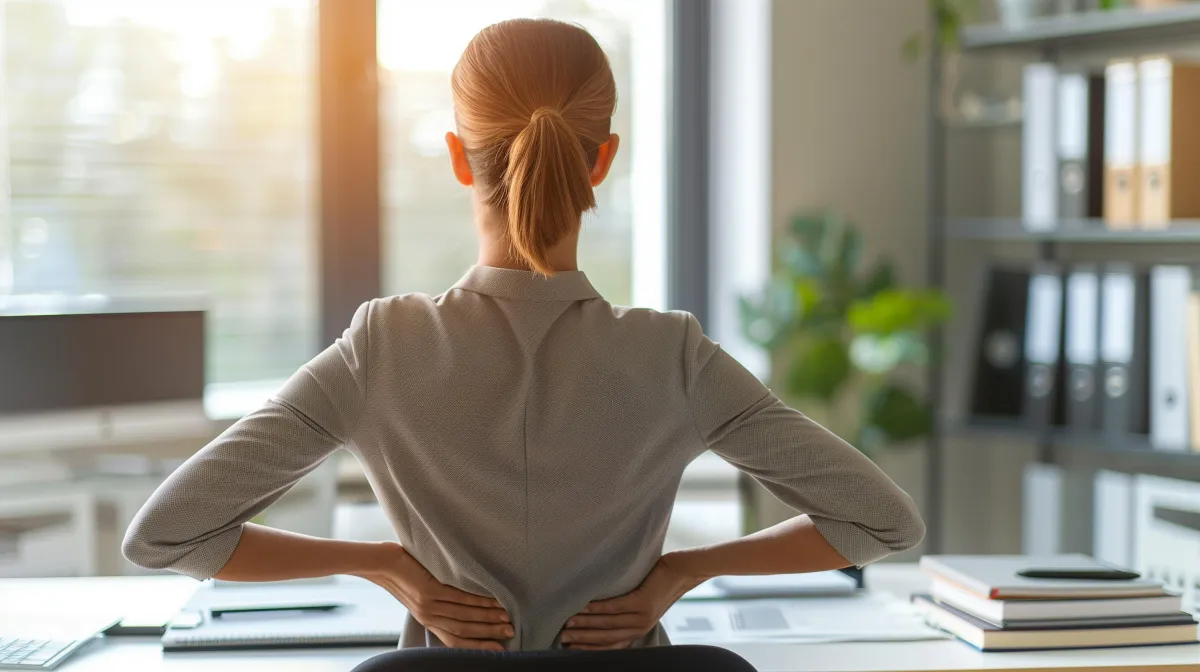Joint Pain
Home » What We Treat » Joint Pain
Say goodbye to the all-too-familiar ache that creeps into your daily hustle. Joint pain, that unwelcome visitor, targets knees, shoulders, hips, and more, with factors and conditions ranging wide. But fret not; we're here to help you reclaim your stride and dance through life, unhindered by discomfort.
Understanding joint pain:
Combat joint discomfort regardless of how you live. Frequently impacts:
Elderly Individuals
With time, our joints can encounter natural wear, heightening the chances of experiencing joint discomfort.
Athletes and Active People
Joint pain can result from sports injuries or excessive joint use.
People with Certain Medical Conditions
Arthritis, lupus, and gout are medical conditions that can lead to ongoing pain in the joints.
Could Joint Discomfort Be Slowing You Down?

Quick Links
Patient Form
FAQs
View More Services
Here are some common signs and symptoms that may indicate joint pain:
1. Pain: Discomfort or pain in the joints that can increase when you move.
2. Swelling: The joint might look puffy and feel warm when touched.
3. Stiffness: Joint movement difficulty or limited motion range.
4. Redness or Heat: The joint might turn red and feel warm when touched.
Is It Possible to Ward Off Joint Pain?
While not all joint pain can be prevented, you can take steps to reduce your risk:
Maintain a Healthy Weight: Maintain a healthy weight to ease joint pressure by following a balanced diet and staying active.
Stay Active: Stay active to maintain joint health and avoid getting stiff.
Protect Joints: Always practice safe methods and wear safety equipment during sports or physical exercises.
Balanced Diet: Eating foods high in calcium and vitamin D supports healthy joints.
Find joint pain relief today:
Joint pain can strike anyone, from sporty types to seniors, causing anything from slight irritation to intense discomfort that may hinder everyday activities and movement. If you're suffering from joint pain.
Seek advice from a healthcare professional to identify the cause and necessary treatment for joint pain. Correct diagnosis and treatment can help manage or reduce the pain, allowing for a more active, satisfying life. Always heed your healthcare provider's recommendations and take steps to safeguard your joints and health!
End joint pain now! Contact Stride Physical Therapy and schedule a visit with our licensed New Jersey therapists. Start your path to lasting relief with our support!
Health Blog

A Physical Therapist’s Perspective on Chronic Back Pain
At Stride Physical Therapy, we see a lot of chronic low back pain and it’s something we know how to handle. Understanding what causes this pain and how you can prevent it is important to us, so we always make sure our patients and their families are well-informed. Remember, having chronic back pain doesn’t mean you have to accept it as a normal part of getting older. You can still experience less pain and enjoy improved mobility, regardless of how long your back has been bothering you. Book an appointment with Stride Physical Therapy to get a personalized consultation. Keep reading to uncover five key insights our physical therapy team has learned about chronic back pain.
1. Most People Will Experience Back Pain at Least Once
Research shows that the majority of people (up to 80%) will have at least one episode of back pain in their lifetime. While not everyone will suffer from long-lasting pain, many cases resolve within a few weeks without special medical care. However, underlying issues like inflexibility or poor body mechanics can persist, increasing the likelihood of recurring pain and injury. Consulting with a physical therapist early can help uncover and address these hidden factors, reducing the risk of conditions like muscle strains, joint misalignments, degenerative disc disease, disc herniation, and nerve impingement.
2. Most Risk Factors for Chronic Back Pain Are Preventable
Many back pain risk factors are preventable. This means reducing your risk of chronic pain and alleviating symptoms is largely within your control. Common preventable risk factors include:
Sedentary lifestyle
Excessive weight
Smoking
Poor posture
Physically demanding jobs that require frequent sitting, bending, twisting, heavy lifting, or exposure to vibration
Stress, anxiety, and depression
At Stride Physical Therapy, we take a holistic approach to treatment, addressing both physical and psychological factors to help you achieve long-term relief.
3. Exercise Often Improves Chronic Back Pain
Moving around with chronic back pain can be challenging, but participating in daily movement is crucial for pain management. Exercise keeps muscles and tissues strong, boosts circulation, reduces chronic inflammation, enhances mood, relieves stress, and helps maintain a healthy body weight. Activities like walking, cycling, and specific exercises to improve tissue healing, strength, flexibility, and endurance are proven effective. A physical therapist can help you develop a safe, effective, and enjoyable exercise program tailored to your needs and goals.
4. Surgery and Long-Term Medications Aren’t Always Necessary
Contrary to popular belief, conditions like herniated discs don’t always require surgery. Invasive procedures like spinal fusions are usually not the first option for chronic back pain. Research indicates that only about half of first-time back surgeries alleviate symptoms, and repeat surgeries have even lower success rates. Surgery also carries risks such as prolonged recovery time and post-operative complications.
Physical therapy is recognized as a first-line treatment for chronic back pain, often reducing the dependency on opioid medications. This makes physical therapy a safer, more cost-effective option.
5. Chronic Back Pain Can Improve Even Without Knowing the Exact Cause
Many cases of back pain are "idiopathic," meaning the exact cause is unknown. Imaging studies like MRIs often don’t correlate with a person’s symptoms. A physical therapist is trained to evaluate, diagnose, and treat spinal conditions. Even if the exact cause is unclear, physical therapy can still provide relief by addressing symptoms and contributing factors like poor posture, decreased hip and shoulder range of motion, and weak core muscles.
Ready to Make Chronic Back Pain a Thing of the Past?
If you're ready to reclaim your active life and start living with less pain, contact Stride Physical Therapy today. Our team is dedicated to helping you achieve long-term relief and improved function.


